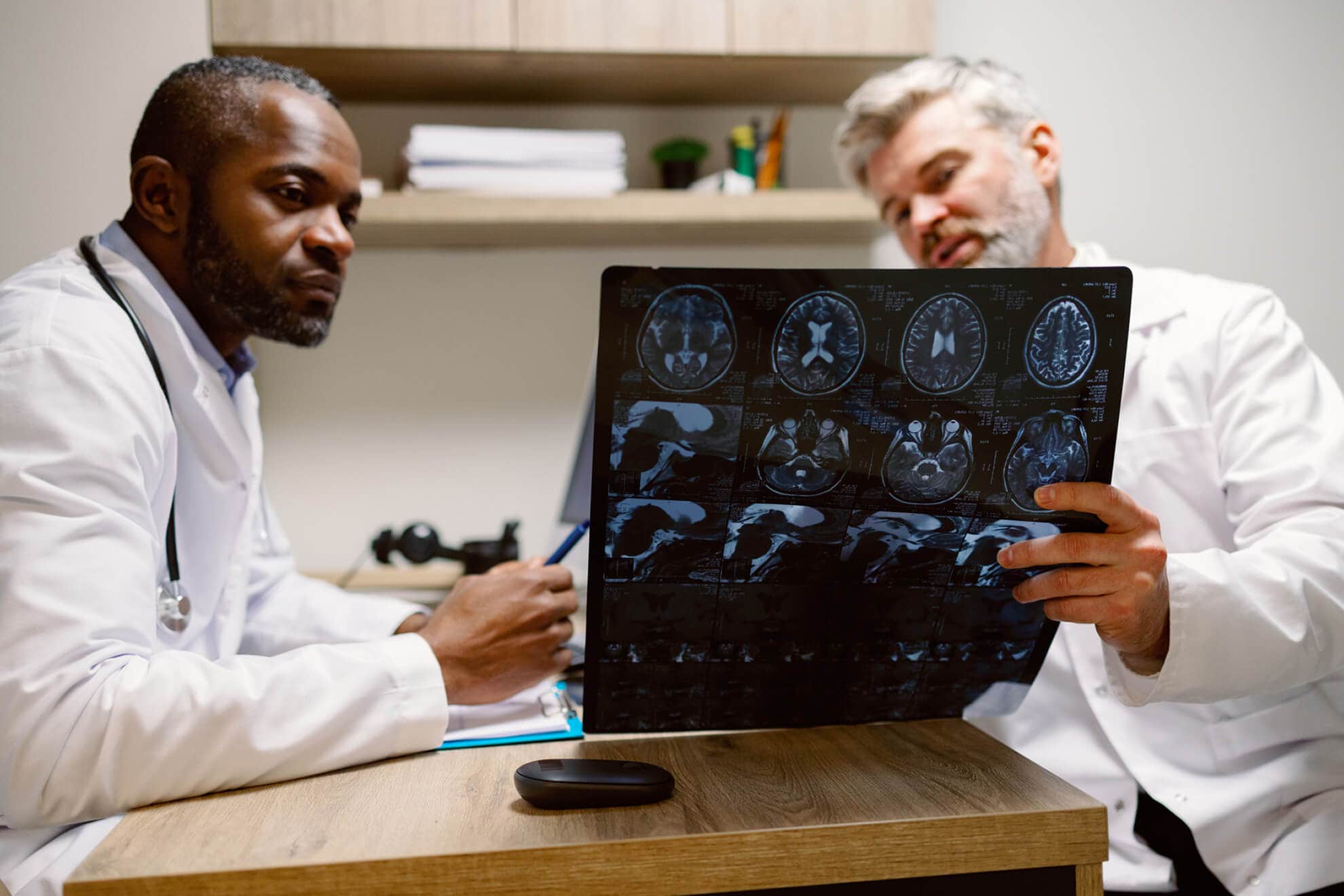Neurological disorders are the second leading cause of death and the leading cause of disability worldwide. According to a global burden of disease study, neurological disorders with the highest burden in the U.S. include stroke, Alzheimer’s disease (AD) and other dementias, and migraine. The Centers for Disease Control and Prevention (CDC) indicate that stroke is a leading cause of death and a major cause of serious disability for adults in the US, where more than 795,000 people suffer a stroke each year.
As our understanding of the human brain and nervous system continues to expand, so do the possibilities for treating the numerous disorders that affect them. From cutting-edge technologies to groundbreaking research, the future of neurology looks incredibly promising. Below we discuss exciting developments in neurology and the treatment of various nervous system disorders, including Alzheimer’s Disease, Huntington’s Disease, Migraine, and Parkinson’s Disease.
Alzheimer’s Disease (AD)
In January 2023, the US Food and Drug Administration (FDA) indicated that the number of Americans affected by AD had surpassed 6.5 million. At the same time, the FDA announced the approval of the second drug in the new category of medications that target the fundamental pathophysiology of AD. A Phase III randomized, controlled clinical trial confirmed the drug’s clinical benefit. This new category of medications is a significant advancement in finding an effective treatment for AD.
One of the challenges in developing a drug for AD is the difficulty of penetrating the blood-brain barrier (BBB). As targeted and controlled drug delivery vehicles, nanoparticle (NP)-based systems have improved efficiency in reaching the brain while reducing toxicity and adverse effects caused by therapeutics circulating throughout the body. According to Poudel & Park (2022), the key technological assets of NPs include their high stability, high drug loading capacity, diversity in incorporating compounds, and versatility in administration routes. The authors recommend that future studies be conducted on improving the safety, precise targetability, and pharmaco-kinetic features of NP-based delivery.
Huntington’s Disease (HD)
Huntington’s Disease (HD) is a rare inherited neurodegenerative and ultimately fatal disease with no disease-modifying interventions. Artificial intelligence (AI) has been applied at various points of the HD drug development process. Mohan et al. (2022) used probabilistic machine learning (ML) methods to develop and validate a model of HD progression. Applying ML algorithms to large HD datasets aid in the discovery of hidden patterns, which could improve trial design and participant selection. Using a deep learning (DL) analysis, Metzger et al. (2022) demonstrated the power of combining machine learning (ML) with phenotypic drug screening to reveal potentially new druggable targets for HD. In another study, researchers used gene profiling ranking and ML models to identify 66 potential contributing genes of HD. ML models have also been applied to predict clinical performance in HD by analyzing brief samples of speech recordings of HD gene carriers, opening the doors for an efficient method for remote evaluation of HD. The feasibility of predicting HD severity with wearable sensors and ML algorithms was evaluated by Scheid et al. (2022). The study concluded that biosensors could provide an objective HD assessment in the clinic or remotely. Biotech and pharma sponsors conducting Huntington’s Disease clinical trials have opportunities and challenges.
Migraine
A migraine is a chronic neurological disease affecting over one billion people worldwide. Digital therapeutics (DTx) is an emerging approach for the remote management of migraines which can complement in-person care. DTx tools aid in the diagnosis, clinical decision-making, and treatment of migraine and include online migraine diagnosis, digitally networked patients, and long-term migraine management. Remote electrical neuromodulation (REN), a novel drug-free acute treatment of migraine, is a prescribed DTx approved by the FDA for episodic and chronic migraine. A study by Ailani et al. (2021) found that REN provides an efficacious, stable, and safe treatment option as a complement and standalone replacement of medications. A recent review of the latest research on DTx in migraine management found that most studies support the feasibility or effectiveness of DTx in tracking and recording migraine attacks, self-diagnosis, treatment, and long-term management guidance. However, the authors suggest that further research with large samples is needed. Learn more about innovative DTx CROs in the US.
Parkinson’s Disease (PD)
Critical challenges in Parkinson’s Disease (PD) drug development and management include the lack of effective diagnostic biomarkers and characterization of the earliest stages of the disease. PD is diagnosed based on clinical symptoms, e.g., motor functions, which tend to appear years after disease onset. To deliver a diagnostic and progression digital biomarker that is objective, non-obtrusive, low-cost, and can be measured at home when needed, Yang et al. (2022) developed an AI system that analyzes nocturnal breathing signals. The researchers demonstrated the feasibility of their AI system to detect PD, predict disease severity, and track progression and provided initial evidence on its use for risk assessment before diagnosis.
A new investigational therapy aims to replace the dopamine nerve cells lost due to PD with healthy cells manufactured from stem cells. Earlier this year, a transplant of stem cell-derived nerve cells was administered to the first patient in the STEM-PD trial. Generated from embryonic stem cells, the transplant is expected to mature into new and healthy dopamine-producing nerve cells in the brain. Researchers will follow the patients and assess cell survival and potential effects in the following years.
The Vial Neurology CRO Can Help Sponsors Develop New Treatments for Nervous System Disorders
Vial is a full-service contract research organization (CRO) delivering high-quality CRO services across therapeutic areas, such as neurology. The Vial Neurology CRO is supported by a modern technology platform, a team of ClinOps experts, and CNS scientific advisors who review and provide input on strategy and direction to advance neurology research. Learn more about the Vial CRO and Vial Neurology CRO.
For insights on the neurology clinical trial landscape, click here.



